Burkhard Schittny
Roll up for the magical mystery tubes!
Burkhard Schittny – Roll up for the magical mystery tubes!

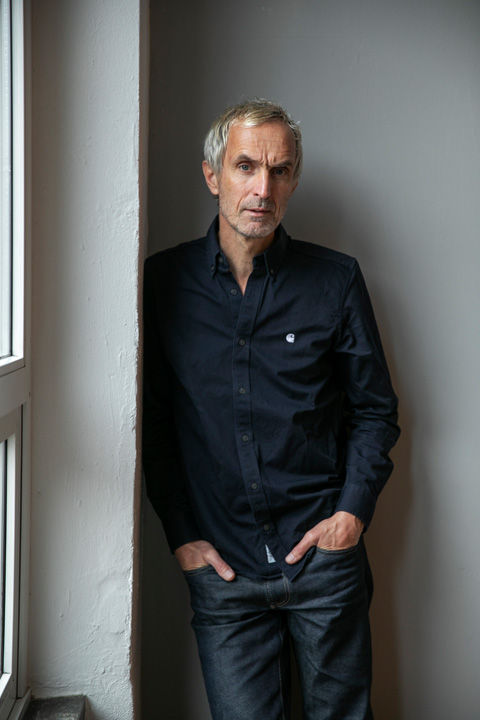
»At some point I had a colour fan with these foils on my desk and then something quite fascinating came into being.«
Hello Burkhard, where are you actually based right now?
In Hamburg, Germany. But I also have a flat in Strasbourg, where I stay from time to time.
Let us first go back to the very beginning of your career. You originally studied fashion design but that led you to photography. Was there a certain key moment that triggered you?
I did fashion quite intensively for the first four semesters, but at the same time I had also started an introductory course in photography. It quickly became clear to me that there wasn’t much new for me to discover in fashion, so I decided to put my desire and passion into photography.
So, I kind of studied photography in parallel and did my thesis with fashion photos that staged a special Francis Bacon reference. That was in 1997 and exactly the time when Photoshop was just getting going intensively.
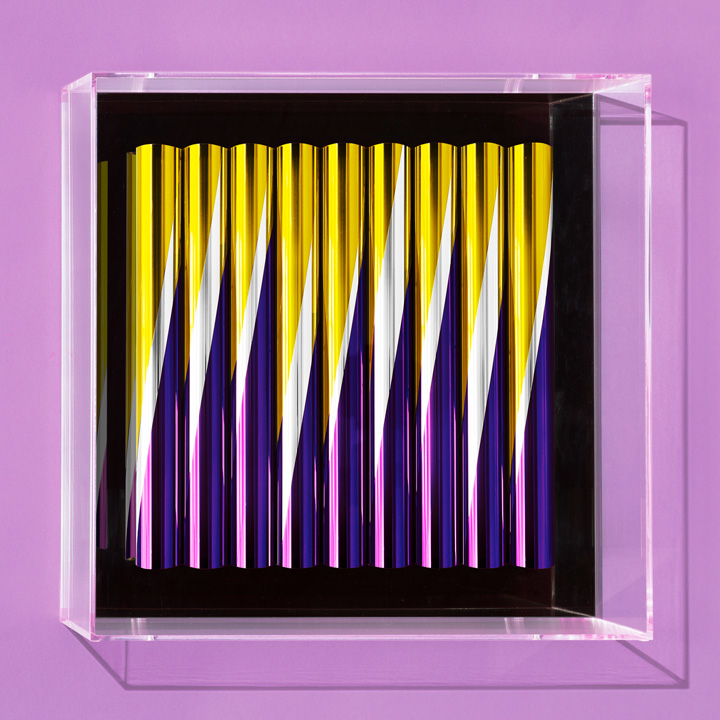
Is your thesis already a result of dealing with these new digital possibilities?
Absolutely, it was a kind of collage technique, just on the computer. That was very different back then, because no one thought of bringing Photoshop into the context of art and photography.
So, I was there quite early and that made it easier for me to enter the industry directly after my studies through the very renowned representative office of Susanne Bransch. She took me in immediately because she saw that I did things very differently from the others.
Ultimately, the range of your works and techniques has become more diverse over the years. Do you change levels to express yourself depending on your mood and state of mind?
Well, I get bored relatively quickly with only one direction and that automatically leads me to new paths again and again. In the beginning, I also worked as a fashion photographer and had interesting assignments on the table, for example from the New York Times Magazine, which was great.
But even in fashion photography it quickly became too one-dimensional for me, so I went into the people photography sector and then landscape photography, architecture or cityscapes came as exciting subjects for me.
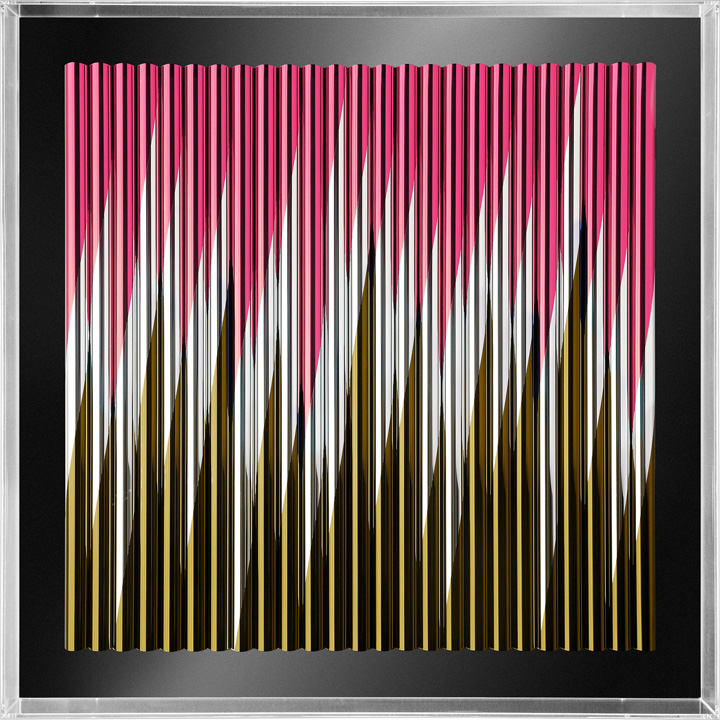
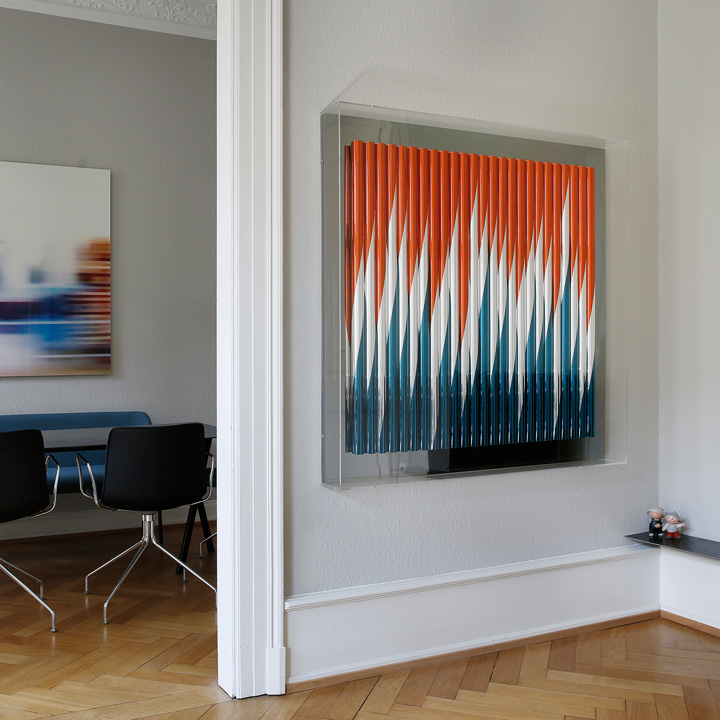
In 2010 you started with a completely different topic, namely dealing with German Nazi history. Did you do that originally for yourself or with an ulterior didactic motive?
The trigger was a personal one, but nonetheless I also always anticipate the exhibition context. For me, dealing with this part of the past was also a confrontation with myself, my work and things like failure and powerlessness.
Ultimately also, as it turned out for me, a confrontation with political abuse of power in general. I started to think about what a state actually does to its people. To what extent are we manipulated and where does that ultimately lead us?
You started with your Tube Series in 2017. That was a huge leap compared to the work of the previous years. How did it come about?
Yes, that’s when my play instinct came through again (laughs).
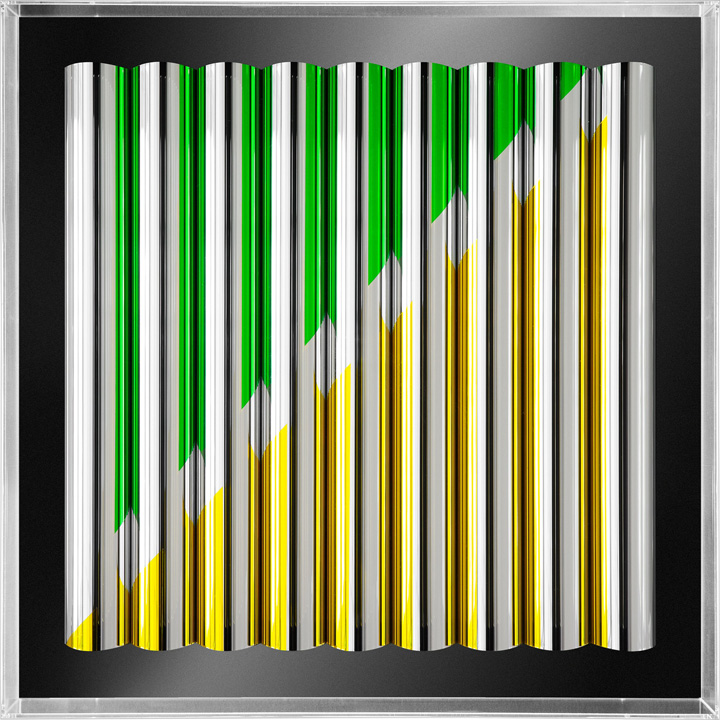
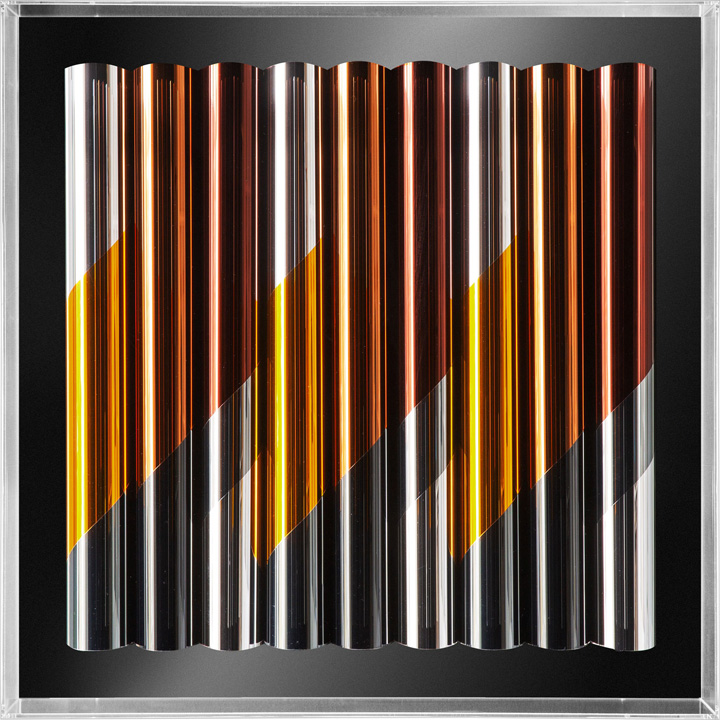
Could you describe it? What did you do specifically?
Ultimately, the impulse comes from photography, namely via the colour and conversion foils that are used here. At some point I had a colour fan with these foils on my desk and began to experiment with them. And then something quite fascinating came into being.
The silver foil is the base and the colours are weaving a system, a graphic idea and a rhythm into it. It looks quite simple but you have to put all the layers together in great detail and a kind of obsession. It’s about delineating the corners and surfaces and not just gluing them together somehow. (laughs).
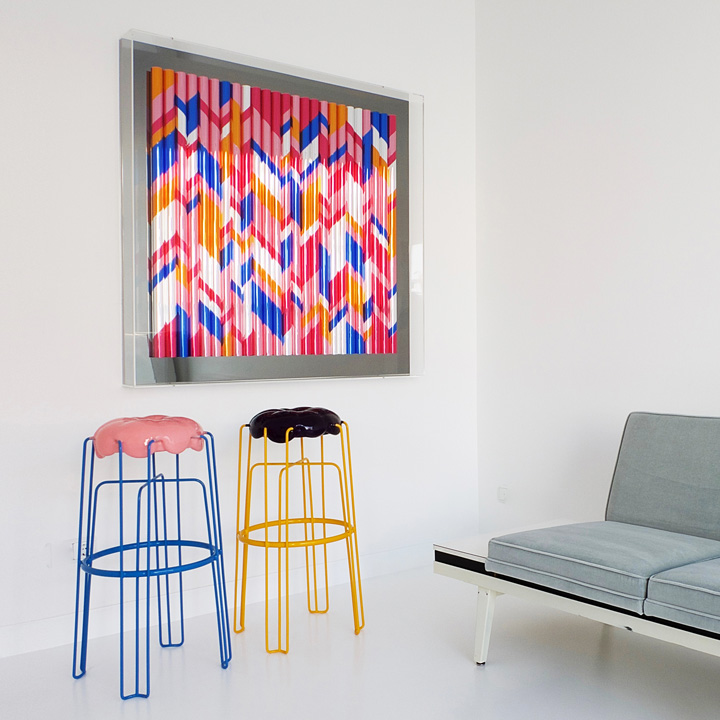
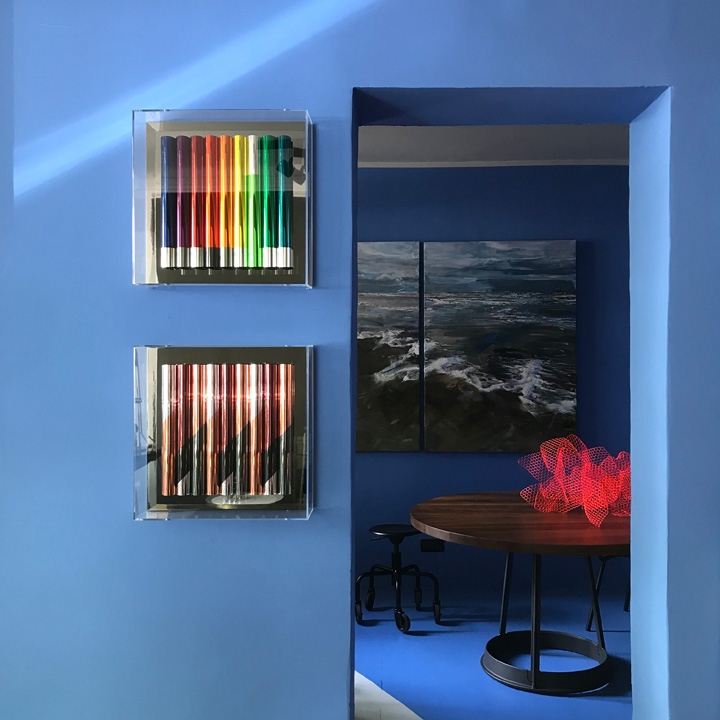
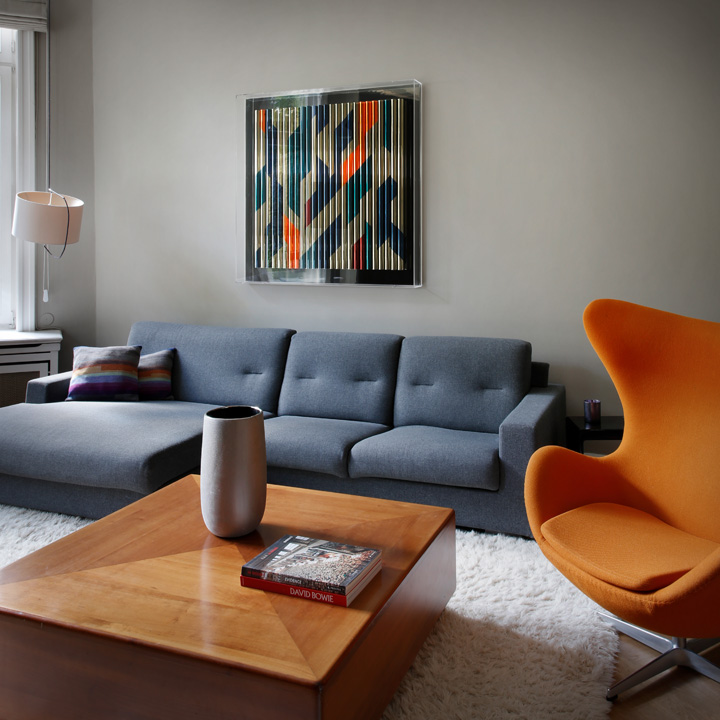
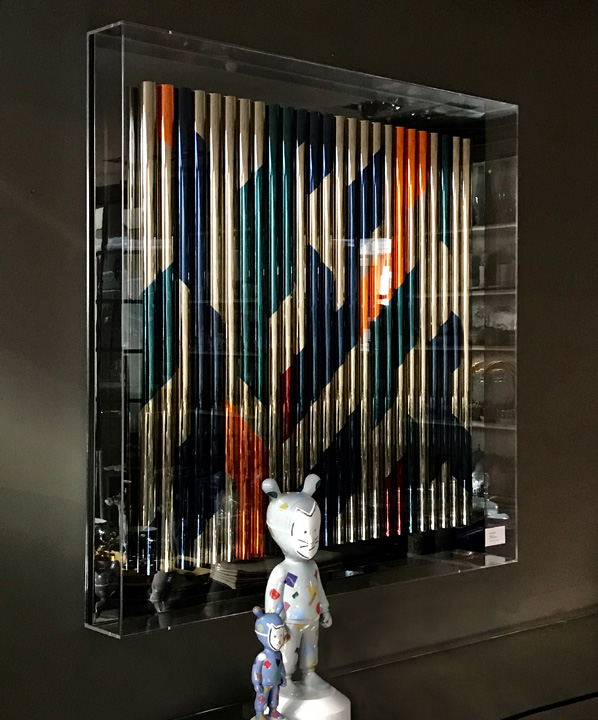
Do you define the graphic composition of a picture in advance or do spontaneous changes sometimes arise during the actual work on a picture?
In fact, almost all the works have been conceived in Photoshop before. But that also has a lot to do with the previous compositions, in which juxtaposed tubes usually relate to each other. Spontaneity, or chance I would say, comes more into play when composing on the computer.
You might not believe it, but the intensive use of various Photoshop tools also leads again and again to coincidences that have already evolved my works in many directions.
How consciously do you anticipate the effect of the image in advance, which changes as one walk by?
In the meantime, I can anticipate the optical effects of the pictures quite well. Nevertheless, I am always surprised at the effect that sometimes small changes in the angle of the colour foils have on the entire image.
Will there be other formats or even forms/bodies on which you apply your technique in the future?
I’m currently experimenting with even more expansive wall objects, where there will probably be tubes in different sizes. But that is still very much at the beginning…. I am also planning wall installations with self-luminous tubes. That wouldn’t be new in art history, of course, but in combination with my colour compositions it would be unique again.
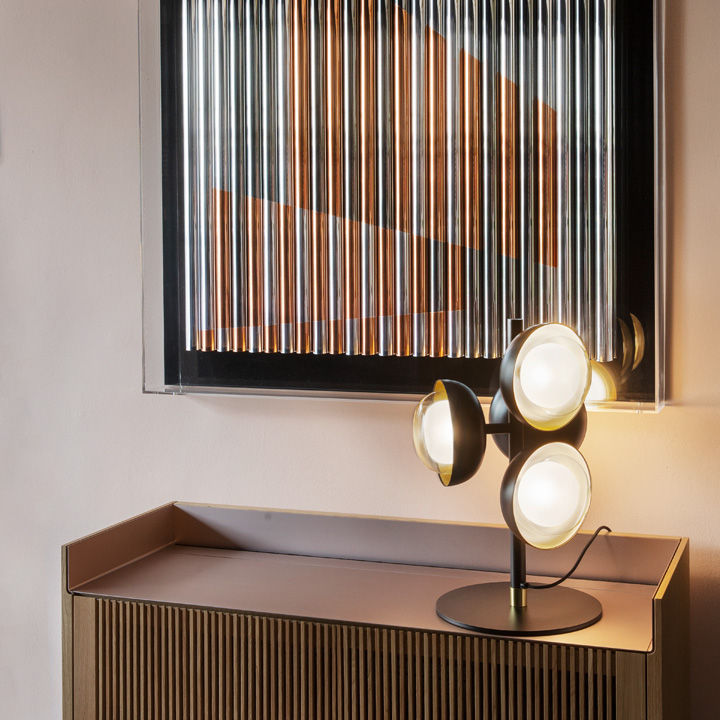
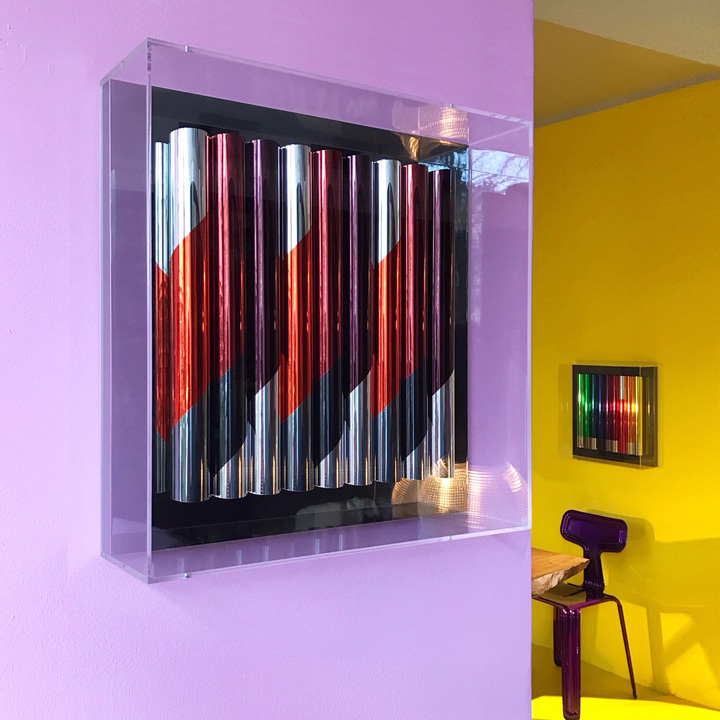
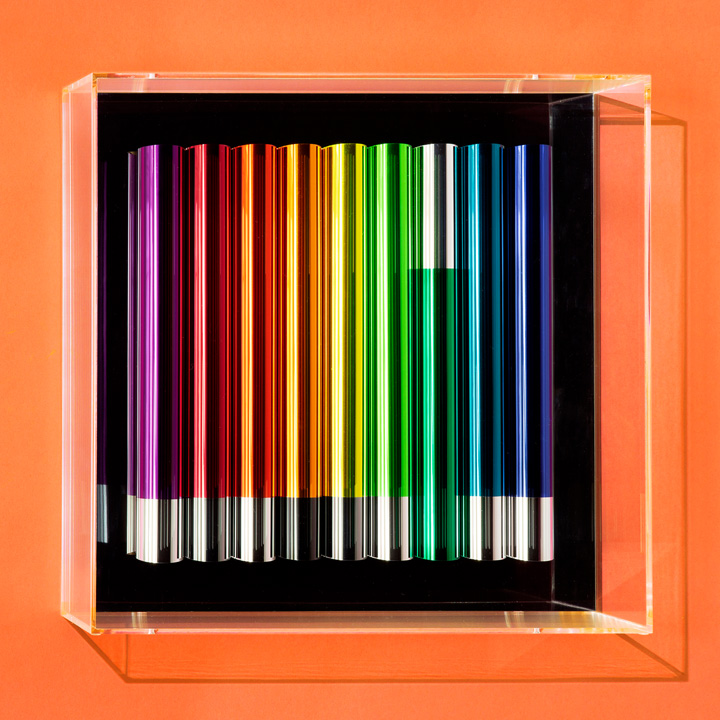
Has the lockdown period had any serious impact on you and your work?
It hasn’t really affected my daily routine much. I have my little studio where I can work in peace… even if it has become quite cramped in the meantime.
Are there any concrete plans for future exhibitions?
I am participating in an exhibition series of the Goethe-Institute on another complex of themes. For the Tube Series, I am about to decide when and how they will find their way to the public in the future.
Thank you, Burkhard!



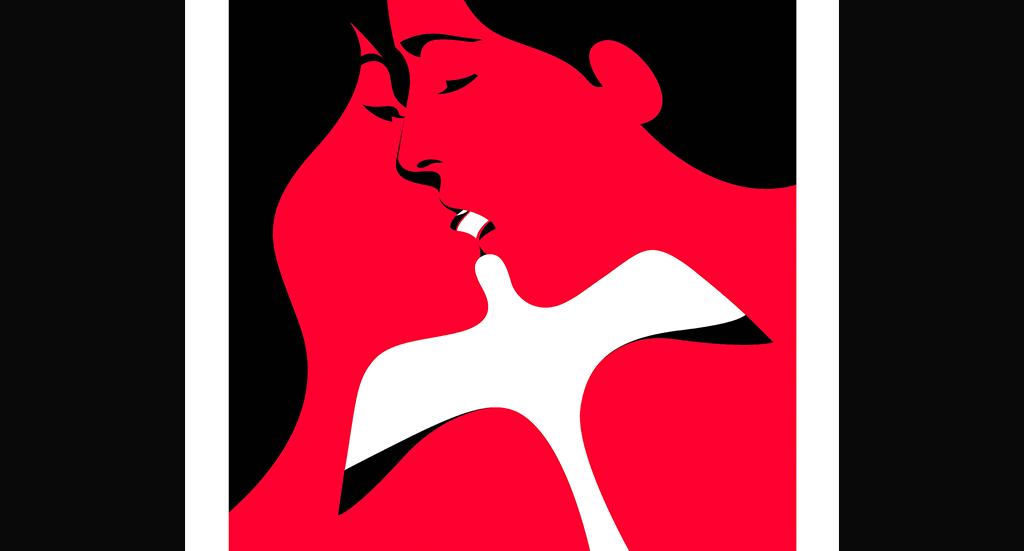
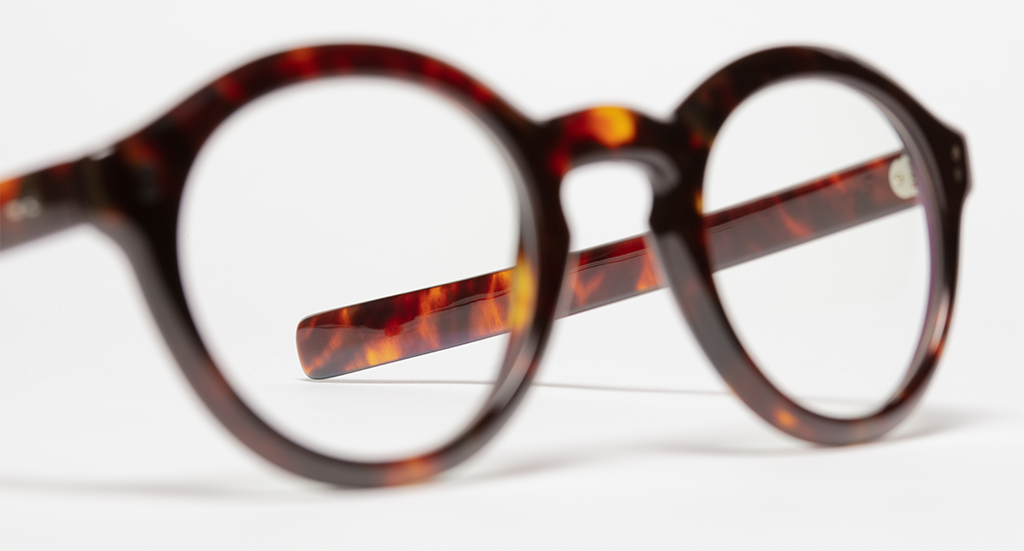

Join our Community